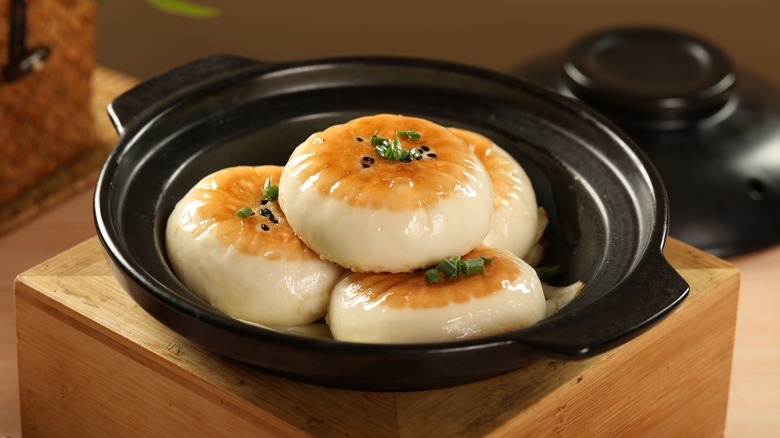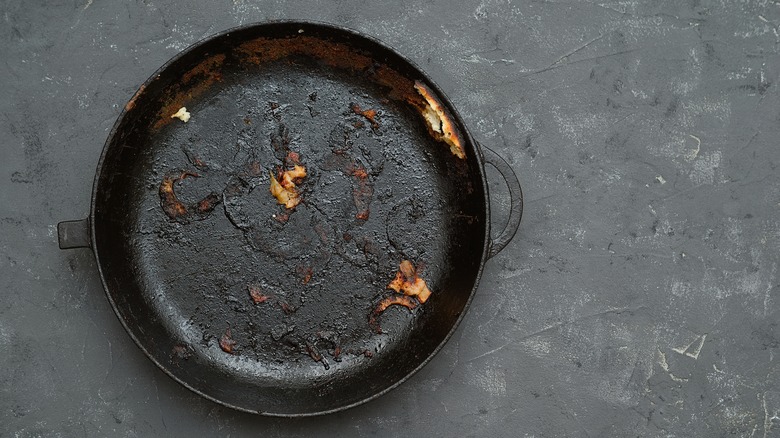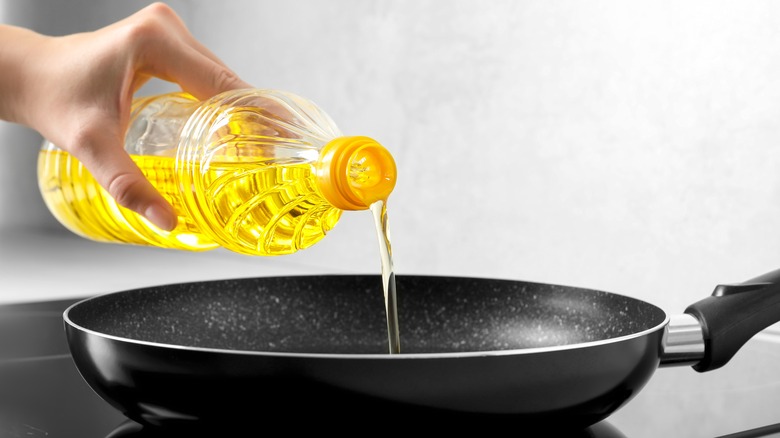Sear Your Bao Buns For A Texture Revelation
Bao buns are fluffy treats that originate from China and come in many different shapes and sizes. They can be both sweet and savory, pinched closed into a neat bundle, or folded over the inside filling. No matter the shape or recipe, all types of bao buns can be seared, and doing so can add another layer of complexity in terms of texture and flavor.
Following this tip means you'll be browning the buns' surface to bring out new flavors and a crisp texture, and requires heating the food at a high temperature for a short period of time. Doing so on a flat-top grill or large pan when they're fresh from the steamer is the ideal method. The goal is to trigger caramelization, the chemical reaction caused when sugar molecules in the food are exposed to high heat and fat (such as cooking oils). Since bao traditionally has sugar in its dough mixture, they can easily reach this caramelization phase.
After you've steamed your buns, use light pressure and gently pat dry them with a paper towel to absorb any excess moisture and to slightly flatten both sides for even searing. Then, lightly drizzle about one tablespoon of cooking oil on your flat-top grill or pan, which should be heated to about 350 degrees Fahrenheit. You'll know you're ready to sear when your cooking fat is sizzling.
Top tips for searing, not burning
For a dish like bao that is ultra-soft and pillowy in texture, searing adds a creative, crunchy twist. However, it can be tricky to stay on the right side of seared versus burned, with the distinction really coming down to time, heat, and intention.
Seared food is intentionally and carefully monitored until the desired degree of browning is achieved. On the other hand, burning unintentionally results in blackened spots, and the nutritional value of the food will be compromised.
Burning will also destroy the original flavor and texture of the bun, only to be replaced by a bitter charcoal-like crust. To avoid burning, gently lift the edge of your bao buns while they are searing to make sure you achieve your preferred texture, whether this be the lightest treacly caramelization or bold crunchy browning.
If you're searing folded bao buns, also called gua bao, you can prevent accidental burning by adding sauces after searing and immediately before serving, especially if your condiments have a high sugar content. Sauces that leak out during searing may heat, caramelize, and then burn faster than the bao bun itself.
Choosing the right fat for searing
Because bao buns have a naturally low fat content, you definitely need to add in fat in the searing process. Choosing the right type is key, however. Avoid unrefined coconut oil, canola oil, and sunflower oil, as the unrefined versions of these all have low smoke points, meaning they start burning and smoking at lower temperatures, which compromises the flavor of whatever they're cooking.
Instead, opt for fats that have a smoke point of 350 degrees Fahrenheit and above, like refined avocado oil, sunflower oil, or even ghee, allowing you to get that perfect browned result at a high heat. If you want the crisp texture of your seared bao buns to be more tasty, use flavorful oils that impart a distinct taste to whatever they're cooking. For example, to enhance Asian flavors in your bao buns, you can sear them in refined sesame oil, which has a smoke point of 410 degrees Fahrenheit and offers that traditional mouthfeel you're looking for.



